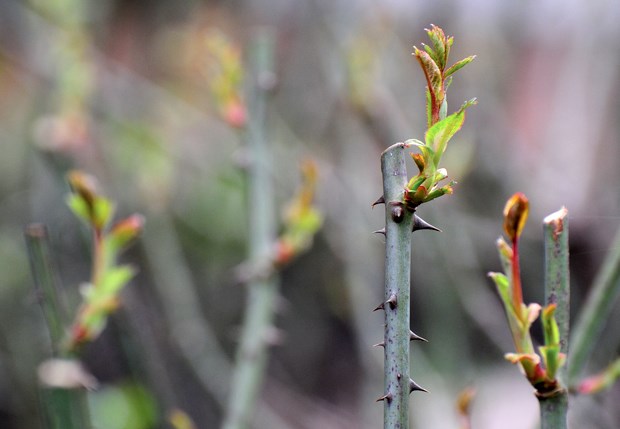When you work closely with nature each day as I do, you are able to notice subtle changes in the weather and the seasons.
Many of the botanists, gardeners and horticulturists I have spoken to over the years are all noticing the same thing - the seasons are moving and changing. Spring seems to be coming earlier and staying longer. Summer is about the same duration, but the heat has shifted to the latter part of the season. And winter seems generally milder.
In my garden right now the Gunnera manicata is poking up its first new shoots through its protective winter covering of leaves and straw - a month too early. My two roses have new shoots almost half an inch long. And my hydrangeas think it's early March and time for pruning. All of those indicators of spring are usually found in the gardens of March, not February.
This winter's warm weather motivated one of Dig Deep's readers to email me and ask, "Are we safe to do spring pruning now or should we wait because there's still a chance of frost?" Firstly, be sure you have a reason for pruning. In the known universe, there are only three reasons to prune: To direct, control or modify growth; to increase flower or fruit production; or to remove dead, diseased, damaged or detracting growth. Any reason you can think of will fall into one of those categories.
Having a reason to prune allows us to choose the type of pruning cut to use - a heading or a thinning cut. Heading cuts are used to induce bushiness and thinning cuts are used to reduce size or foliage density.
Having a purpose for pruning also helps focus the timing of work into one of two seasons - dormant season (winter), or active season (summer). Each season provides a different growth response. Winter pruning invigorates growth while summer pruning suppresses growth. Spring and fall pruning just messes with natural rhythms leaving plants trying to recover.
If you are a regular reader of my column you will have some understanding of all those terms and how to use them in the garden.
Once you have a valid reason to prune and February is the time, other factors must be considered in relation to the potential for frost damage.
Geography or where you live plays a big role in determining when to prune in winter. The higher the altitude the later you prune some plants. The lower the altitude, for example down near the ocean, the earlier you prune. Aspect or the relation of your garden to the sun must also be considered. Gardens that face south or west are generally warmer versus gardens that face north or east and tend to be colder and potential frost pockets.
The type of plant you are pruning also plays a role in timing the work. Most of the Lower Mainland is climatically designated as Zone 8a to 8b with the extreme minimum temperature averaging -12.2 C, according to Natural Resources Canada's website, planthardiness. gc.ca.
There are warmer and colder microclimates within our region; for example, Lighthouse Park is warmer than the Grousewoods area, and Lynn Valley is colder than Dollarton Highway.
Using our zone's minimum temperature you can ascertain the cold hardiness of the plant to be pruned and work accordingly. Common plants, such as boxwood, cherries, forsythia, grape vines, heathers, magnolias, rhodos and so forth, are genetically hardy to withstand -12.2 C, so freezing temperatures are not likely to severely damage those plants. This means it's safe to prune now on those plants, depending on your purpose for pruning. The caveat being that pruning should not occur when temperatures are below -1 or -2 C to avoid frost jacking. Frost jacking occurs in plant tissue when cut branch ends expand and crack due to the freezing of moisture within the branch. Frost jacking also occurs in rocks, which is partly how soils are formed, but I digress.
The only plants to exercise caution with when pruning in late winter are plants commonly called borderline or marginally hardy. Those plants include plants native to the Mediterranean, California, Chile or south Asia like where some tender rhododendron originate. There are also sub-shrubs like lavender, Cistus species and other shrubs with fine branching that are prone to winter burn so caution is needed when scheduling their pruning.
When it comes to rose pruning, the old standard is to prune St. Patrick's Day week plus or minus a week depending on your elevation.
If our winters keep warming, I think we may need a new standard, like prune Valentine's Day plus or minus a week. But I'm not pruning my hydrangeas or roses just yet. February has shown in the past to be capable of freezing our buds off.
Todd Major is a journeyman horticulturist, garden designer and builder, teacher and organic advocate. [email protected]



